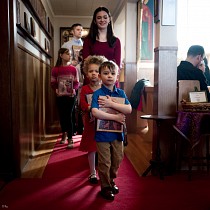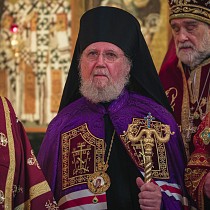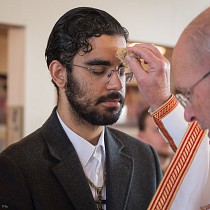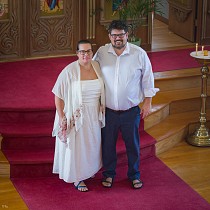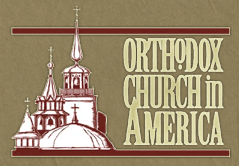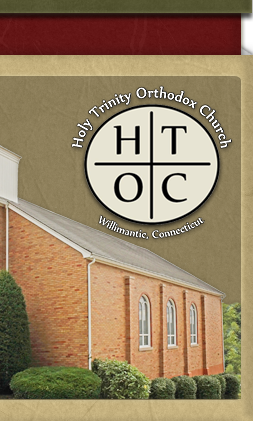With church memberships continuing to decline throughout the Orthodox Church, the viability of a bi-vocational priesthood increases daily. More clergymen are working outside the parish in order to provide for themselves financially, than at any other time.
According to figures provided by V. Rev. Dr Eric G. Tosi, Secretary of The Orthodox Church in America, the number of bi-vocational priests is already quite sizable and the future will see that rise to a majority. The average Orthodox Church in America parish is 80-90 people. With the cost of health insurance skyrocketing, many churches which currently pay their priest’s health insurance, plus provide a living wage, in addition to other amenities, will see future clergy going into the bi-vocational priesthood. And maybe that’s not a bad thing.
Blessings are plentiful with this type of ministry. Consider:
The late Metropolitan Anthony Bloom once referred to our neighbor as the one who God has placed in our midst at any given time, meaning there are numerous opportunities to encounter God in the routine events of everyday life. By choosing to recognize each person as God’s presence in our life, then the opportunity to do God’s will throughout the day is ever-present.
The bi-vocational priest’s ministry is not simply limited to his own worshipping community. The cosmos becomes the bi-vocational priest’s parish. Every time he enters into the world, it becomes the field in which he works and ministers. He is immediately plunged into the midst of the unchurched and non-Christians, and begins to share his faith with others which provides a rich and daily opportunity to bear witness to the Risen Savior. The bi-vocational priest ministers to whomever God places in his life, and recognizes that person as his neighbor. Because the main work of each Christian is to bear witness to God’s presence to where we are, what we are doing, and whomever we are with, then this type of ministry is ripe with the possibility of doing God’s work.
Diane Zaerr Brenneman in her article on ‘Biblical and Theological Support for Bivocational Ministry, asks, “As we understand our own ministries as extensions to Christ’s ministry, how can we strive to do any less than serve all people? Certainly this theological perspective calls pastors to consider the challenging route of bi-vocational ministry so that under-served congregations – ‘all nations’ – might benefit from pastoral leadership, not just large congregations with salary and benefits for full-time pastors.”
The bi-vocational priest is presented with the opportunity to consistently engage in interfaith and multi-cultural dialogue, forcing the priest to speak less, and listen more. The bi-vocational priest is often seen as being less cocooned. The bi-vocational priest is more authentic and less intimidating; he is, as some might suggest, more real. He better understands the struggles of daily life his parishioners experience and can meet them where they are.
The bi-vocational, or ‘working priest’, as he is sometimes called, is not new. The custom is rooted in Scripture.
The bi-vocational priesthood was practiced by the Apostle Paul, and even the disciples who were fisherman and called to be ‘fishers of men’ (Matthew 4:18, Mark 1:16, Luke 5:10). A tentmaker by trade (Acts 18:3), along with fellow ministers Aquila and Priscilla (Acts 18:2), Paul had the opportunity to ‘argue’ with the Jews (and Greeks) in the synagogue, but also every day in the marketplace (Acts 17:7). Elsewhere, Paul encourages those in the church in Thessalonica “to work with your hands … so that you may command the respect of the outsiders, and be dependent on nobody” (I Thessalonians 4:11-12). Paul’s trade was central to his ministry. We can also assume the basic skills required of tent making – cutting and stitching leather – was difficult work.
The pastor’s bi-vocational priesthood produces abundant fruit for himself and his parish community.
• It empowers laity to lead. First, the priest must educate, equip, and encourage. Crucial to his own two-vocational ministry is the need to delegate.
• It reduces the financial strain on the parish and allows assets to be utilized for mission, acts of mercy, and ministry.
• He has less time to become involved in controversy within the church.
• Bi-vocational priests tend have longer pastorates in the same parish.
There are areas however, which can be greatly impacted in a negative way, and deserves our attention.
• The bi-vocational priest must be an excellent time-manager.
• The demands on his time can be overwhelming, and he can feel exploited (full-time work; part-time pay).
• Administrative and functional aspects of ministry can suffer.
• Family priorities will come into play. There must be balance.
• The bi-vocational priest is less likely to serve on civil boards or committees, and can also be isolated and feel marginalized by other clergymen, especially those from his own faith-based community who he should maintain contact with.
The bi-vocational priesthood is a Godly life. Critical to its ministry is that the bi-vocational secular ministry must be consistent with his priestly ministry. Whatever work is done however, in either field, the goal remains the same: To preach the Good News; to bring all to the Kingdom of God. – Marc Vranes
-------------
V. Rev Marc A. Vranes is employed by the Bristol Adult Resource Center, and also serves as a per diem chaplain at the Hospital for Special Care in New Britain, Connecticut. He has been the rector at Holy Trinity, Willimantic, CT, since 1996.







